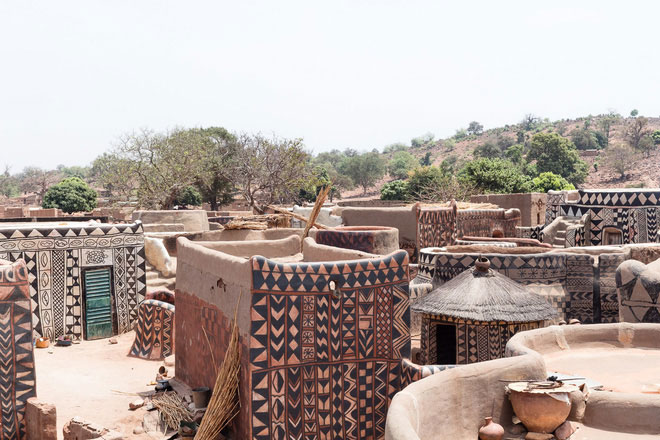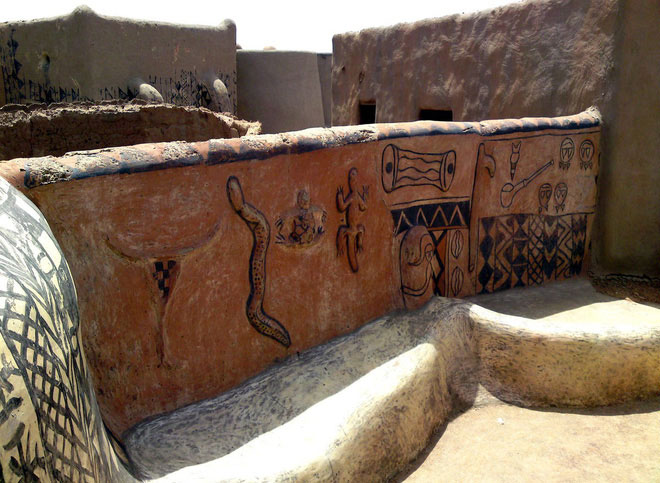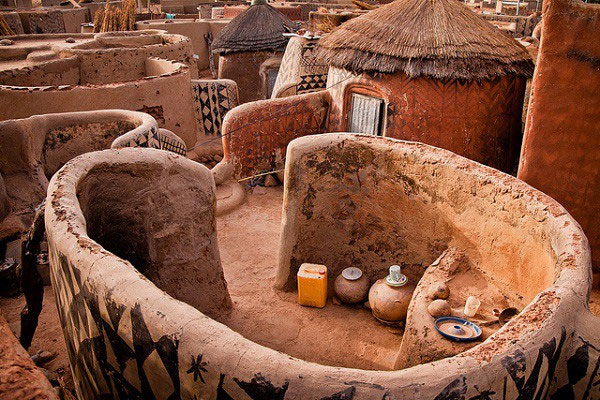Tiébélé: An ancient village made of cow dung, every house is a work of art
Located about 20km north of the Ghanaian border, the village of Tiébélé in West Africa, Burkina Faso, is famous throughout the world for its beautifully decorated houses, also called with the local name. sukhala.
The sukhala houses are located in the complex - the residence of community leaders. People here belong to the Kassena ethnic group and have a history of mining and settled in this village since the 15th century.

This is the residence of the Kassena ethnic group.
The wall decoration of these houses is usually undertaken by village women. This is one of the most unique traditional cultures of the Kassena people.
Each drawing, each line, traditional patterns are drawn by hand with the main colors being black, white and red. Finally, it is coated with a natural varnish extracted from legumes. The drawings all have their own meanings such as asking for the lush crop, praying for reproduction, wisdom .

Wall decoration of these houses is usually undertaken by women in the village.
Wall decoration has become a community activity for women in Tiébélé village in general and for the Kassena community in particular here. About 15 assigned women will share the wall decorations for the designated houses. This activity usually takes place in February or March, after the harvest ends. Not only houses but also tombs for the dead are decorated in such magnificence.
In the central area of Tiébélé village there are about 450 people living. All houses here are built from soil, hay and cow dung, although today, people have started replacing mud, brick and stone to make the house more stable.

Usually children will live with their grandparents in octagonal houses.
The architecture of Tiébélé village is influenced by the larger ethnic group - Gurunsi. Their houses have no windows, very small doors and have 30cm-thick walls to protect the villagers from inclement weather as well as limit enemy invasion.
Usually children will live with their grandparents in octagonal houses. Couples living in a rectangular house and single people will live in a circular house.
In 2006, after the village chief died, the people at Tiébélé were no longer leaders but they still tried hard to maintain the traditional customs of their village.

Their houses do not have windows, doors are very small.
Since 2012, Tiébélé has been listed by the World Heritage Foundation as a potential world heritage site.
Activities of propaganda, help and renovation of drainage and safety protection systems in the area have been implemented.
Tourism activities in the village are also being promoted, on the one hand, to create a stable economic source for the villagers, on the other hand, it can spread and preserve the unique culture of the people here.










- The most original ancient village of Phu Tang
- The vestige of the ancient village house is over 200 years old
- Discover the village over 1000 years old in the US national park
- Traces the 2,300-year-old village
- Discover ancient wells near Ho's citadel
- Excavate the house, discover ancient 2-year-old bronze drum
- Devotees head to the ancient village in Turkey
- Beautiful paper made from elephant dung
- Discovered the 6,300-year-old 'eco-house' near Stonehenge
- Chu Cat Bagua village and Khong Minh's
- 15 villages as beautiful as fairy tales
- Drinking water extracted from cow dung
 'Fine laughs' - Scary and painful torture in ancient times
'Fine laughs' - Scary and painful torture in ancient times The sequence of numbers 142857 of the Egyptian pyramids is known as the strangest number in the world - Why?
The sequence of numbers 142857 of the Egyptian pyramids is known as the strangest number in the world - Why? History of the iron
History of the iron What is alum?
What is alum?